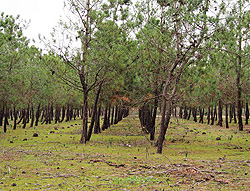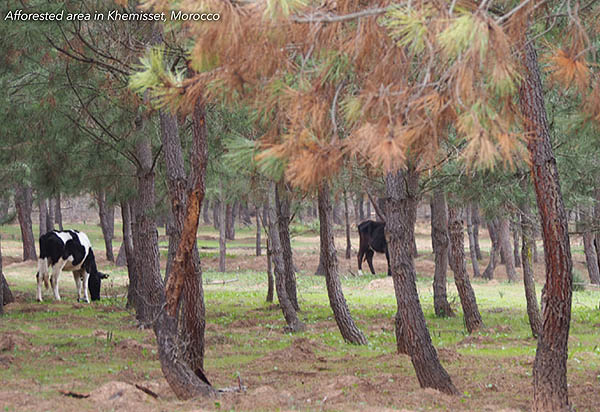REACHING THE 1.5-DEGREE TARGET?
The conclusion of the Paris Climate Agreement was an ecstatic moment for people working against climate change. The agreement was greeted with superlatives and described as a historical breakthrough. Enthusiastic work was begun to produce concrete proposals for achieving the goals of the agreement. However, many of the measures are uncertain and their net impact is debatable and/or materializes too late to enable the world to stay at the 1.5-degree target. For example, the penetration rate of electrified transport is very slow, and the net GHG savings are marginal when measured on well-to-wheel basis. Also, the ramp up of significant advanced biofuels production capacity will take place during the next decade, assuming the right policy framework is in place. There are also sectors with no sufficient CO2 abatement methods as yet available. For example, ICAO has agreed upon a carbon neutral growth of global aviation from 2020 onwards. However, the practical tools seem insufficient if not non-existent, only a couple of years prior to the agreement becoming effective. Additional tools are imperative to mitigate the risk of delays and failures in the already selected decarbonization measures. Also, the cost of decarbonization needs to be considered. Today, the CO2 abatement cost of using biofuels in road transport is ca. 150 €/t CO2 in the Nordics. And with electric vehicles the cost is significantly higher. In light of the above and numerous other examples the Paris agreement target seems to be escaping us.
 CARBON DEBT IS ALREADY 100 BILLION TONS
CARBON DEBT IS ALREADY 100 BILLION TONS
Assuming the totally hypothetical scenario where the whole world would suddenly stop emitting any greenhouse gases into the atmosphere, the climate change would continue. The simple reason is the paralyzing amount of 100 billion tons (100.000.000.000 tons) of excessive carbon in the atmosphere today. To put it in perspective, to biologically sequestrate the entire amount equals a forest the size of the Sahara. Whatever the world or the EU decides to do with the continuously growing GHG emissions, we need to start sequestrating the atmospheric CO2, immediately and at unprecedented speed. We must start paying the global Carbon Debt, now. The good news is that we already have a well-functioning tool that is globally recognized and cost effective. It's about planting trees and forests, ie. afforestation or reforestation. It's even included in every international climate agreement.
”The power plant can operate solely with biofuel. At the same time, we are developing smart decentralised energy production and storing, and improving energy efficiency comprehensively."
CLIMATE WORK AS PART OF THE CITY'S IDENTITY
Arve reminds that the best way to reach the goal is that all residents, businesses and communities commit themselves to ambitious climate action. She continues by saying that cities and their residents have a key role in battling climate change.
The bad news is that we are extremely poor and slow at deploying it. For the big part it has to do with the fact that the increasing population needs more and more resources and agricultural land which, instead, causes deforestation. Globally, we are moving in the wrong direction, even though in some regions, like the Nordics, the forests are in fact growing.
CARBON FARMING
What can we do to get the global afforestation pace at the level required? The question is about money. Carbon needs to be monetized, and in this case the biologically sequestrated carbon. When the carbon has a price, the growing biomass has a value. With value a company can have a business case to invest in. We have named it Carbon Farming. If the CO2 abatement cost of 150 €/t is taken as a reference, there is a lucrative business case to invest in Carbon Farming. The measurement of sequestrated carbon needs to be done according to the IPCC guidelines. Naturally, a robust and fully transparent management system should be put in place as well as being audited and verified on a regular basis. It has to be emphasized that the idea is to incentivize the afforestation as a supplementary tool to sectoral and national activities. It’s not intended to be a substitutive method. Actions need to be taken simultaneously and on all fronts.
LOW TECH SOLUTION
In deserted or semi-deserted areas, a well-functioning irrigation system is a prerequisite for success. Ideally, treated waste water, or, if not available, even with the help of solar power, desalinated sea water can be used to irrigate the plantation. There are plentiful successful case examples to demonstrate that this is doable. In addition, globally, there are large areas where Carbon Farming could be fully deployed with or without a limited amount of artificial irrigation requirement. Carbon Farming is an overlooked and underrated low-tech
solution, just waiting to be deployed on a large scale.
REGULATION AS ENABLER
In the EU we must create a regulative framework that enables a cross sectoral and geographically cross border flexibilities to mitigate climate change by also enabling Carbon Farming. Practically, this means a structure where a part of the sectoral and national GHG reduction target could be fulfilled with biological carbon sequestration in the EU as well as in other parts of the world. Climate change is a global problem, and the measures need to be taken globally, regardless of where we live, or where companies happen to be headquartered or where they operate. This is well recognized in the Paris Agreement. Unfortunately, the envisaged EU 2030 Effort Sharing regulation would specifically prevent a cross sectoral and cross border approach to the extend needed to make Carbon Farming a reality. We are moving in the wrong direction. We must do a U-turn.
CONCEPT THAT COMBATS CLIMATE CHANGE AND BENEFITS LOCAL PEOPLE AND SOCIETY
There is a long history of afforestation and reforestation activities worldwide, from where good and bad lessons learned should be drawn. One of the main goals is to ensure that the afforested area remains and flourishes for years and decades to come. The fundamental key success factor is to create a concept that benefits local people and society. Firstly, land ownership should be undisputable and societal conditions should be stable enough to enable long term investment. Concepts, where the growing biomass offers a monetary value for local people, have proven to be most successful in the history of afforestation. Perhaps, the most appealing approach is the so called Agro-forest concept. The idea is simply to combine large tree plantations with crop farming. This is especially effective in arid areas, where an Agro-forest offers an array of environmental and societal benefits, such as prevention of desertification, increased food production and even decreased pressure on international migration. For example, if the Agro-forest concept could be successfully implemented in the Sahel area, it would at best create decent living conditions which are so desperately needed in this region.

Carbon Farming should not be seen as a substitution to sectoral decarbonization measures. It is a supplementary, and paramount tool to fight climate change. It's not about either or – it's about both and more.
Contact Details:
Mika Aho
Director, Public Affairs
St1 Nordic Oy
Tel: +358 50 500 2072
email: mika.aho@st1.fi
web: www.st1.eu